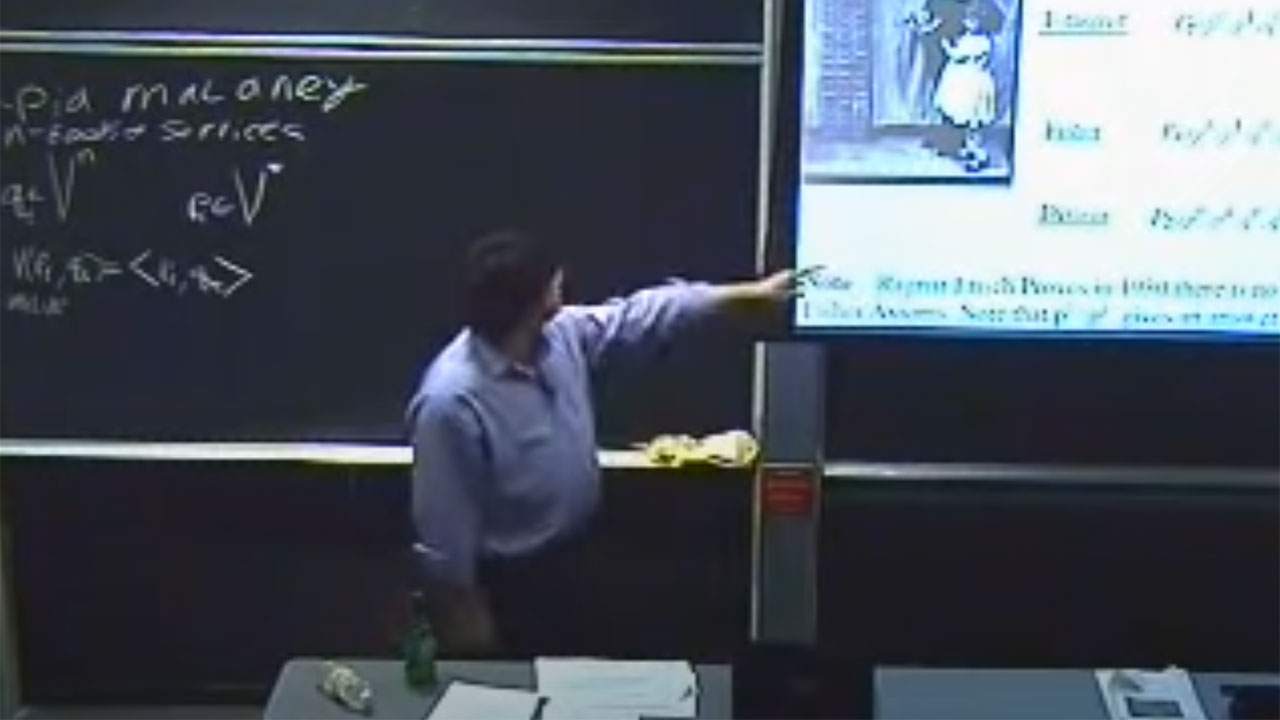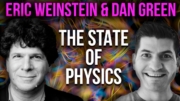
WHAT IS YOUR FAVORITE DEEP, ELEGANT, OR BEAUTIFUL EXPLANATION?
Einstein’s Revenge: The New Geometric Quantum
The modern theory of the quantum has only recently come to be understood to be even more exquisitely geometric than Einstein’s General Relativity. How this realization unfolded over the last 40 years is a fascinating story that has, to the best of my knowledge, never been fully told as it is not particularly popular with some of the very people responsible for this stunning achievement.
To set the stage, recall that fundamental physics can be divided into two sectors with separate but maddeningly incompatible advantages. The gravitational force has, since Einstein’s theory of general relativity, been admired for its four dimensional geometric elegance. The quantum, on the other hand encompasses the remaining phenomena, and is lauded instead for its unparalleled precision, and infinite dimensional analytic depth.
The story of the geometric quantum begins at some point around 1973-1974, when our consensus picture of fundamental particle theory stopped advancing. This stasis, known as the ‘Standard Model’, seemed initially like little more than a temporary resting spot on the relentless path towards progress in fundamental physics, and theorists of the era wasted little time proposing new theories in the expectation that they would be quickly confirmed by experimentalists looking for novel phenomena. But that expected entry into the promised land of new physics turned into a 40-year period of half-mad tribal wandering in an arid desert, all but devoid of new phenomena.
Yet just as particle theory was failing to advance in the mid 1970s, something amazing was quietly happening over lunch at the State University of New York at Stony Brook. There, Nobel physics laureate CN Yang and geometer (and soon to billionaire) Jim Simons had started an informal seminar to understand what, if anything, modern geometry had to do with quantum field theory. The shocking discovery that emerged from these talks was that both geometers and quantum theorists had independently gotten hold of different collections of insights into a common structure that each group had independently discovered for themselves. A Rosetta stone of sorts called the Wu-Yang dictionary was quickly assembled by the physicists, and Isadore Singer of MIT took these results from Stony Brook to his collaborator Michael Atiyah in Oxford where their research with Nigel Hitchin began a geometric renaissance in physics inspired geometry that continues to this day.
While the Stony Brook history may be less discussed by some of today’s younger mathematicians and physicists, it is not a point of contention between the various members of the community. The more controversial part of this story, however, is that a hoped for golden era of theoretical physics did not emerge in the aftermath to produce a new consensus theory of elementary particles. Instead the interaction highlighted the strange idea that, just possibly, Quantum theory was actually a natural and elegant self-assembling body of pure geometry that had fallen into an abysmal state of pedagogy putting it beyond mathematical recognition. By this reasoning, the mathematical basket case of quantum field theory was able to cling to life and survive numerous near death experiences in its confrontations with mathematical rigor only because it was being underpinned by a natural infinite dimensional geometry, which is to this day still only partially understood.
In short, most physicists were trying and failing to quantize Einstein’s geometric theory of gravity because they were first meant to go in the opposite and less glamorous direction of geometrizing the quantum instead. Unfortunately for Physics, mathematicians had somewhat dropped the ball by not sufficiently developing the geometry of infinite dimensional systems (such as the Standard Model), which would have been analogous to the 4-dimensional Riemannian geometry appropriated from mathematics by Einstein.
This reversal could well be thought of as Einstein’s revenge upon the excesses of quantum triumphalism, served ice cold decades after his death: the more researchers dreamed of becoming the Nobel winning physicists to quantize gravity, the more they were rewarded only as mathematicians for what some saw as the relatively remedial task of geometrizing the quantum. The more they claimed that the ‘power and glory’ of string theory (a failed piece of 1970s sub-atomic physics which has mysteriously lingered into the 21st century) was the ‘only game in town’, the more it suggested that it was the string theory-based unification claims that, in the absence of testable predictions, were themselves sinking with a glug to the bottom of the sea.
What we learned from this episode was profound. Increasingly, the structure of Quantum Field Theory appears to be a purely mathematical input-output machine where our physical world is but one of many natural inputs that the machine is able to unpack from initial data. In much the way that a simple one-celled human embryo self-assembles into a trillion celled infant of inconceivable elegance, the humble act of putting a function (called an ‘action’ by physicists) on a space of geometric waves appears to trigger a self-assembling mathematical Rube-Goldberg process which recovers the seemingly intricate features of the formidable quantum as it inexorably unfolds. It also appears that the more geometric the input given to the machine, the more the unpacking process conspires to steer clear of the pathologies which famously afflict less grounded quantum theories. It is even conceivable that sufficiently natural geometric input could ultimately reveal the recent emphasis on ‘quantizing gravity’ as an extravagant mathematical misadventure distracting from Einstein’s dream of a unified physical field. Like genius itself, with the right natural physical input, the new geometric quantum now appears to many mathematicians and physicists to be the proverbial fire that lights itself.
Yet, if the physicists of this era failed to advance the standard model, it was only in their own terms that they went down to defeat. Just as in an earlier era in which physicists retooled to become the first generation of molecular biologists, their viewpoints came to dominate much of modern geometry in the last four decades, scoring numerous mathematical successes that will stand the tests of time. Likewise their quest to quantize gravity may well have backfired, but only in the most romantic and elegant way possible by instead geometrizing the venerable quantum as a positive externality.
But the most important lesson is that, at a minimum, Einstein’s minor dream of a world of pure geometry has largely been realized as the result of a large group effort. All known physical phenomena can now be recognized as fashioned from the pure, if still heterogeneous, marble of geometry through the efforts of a new pantheon of giants. Their achievements, while still incomplete, explain in advance of unification that the source code of the universe is overwhelmingly likely to determine a purely geometric operating system written in a uniform programming language. While that leaves Einstein’s greater quest for the unifying physics unfinished, and the marble something of a disappointing patchwork of motley colors, it suggests that the leaders during the years of the Standard Model stasis have put this period to good use for the benefit of those who hope to follow.
This essay was originally published in 2012 at https://www.edge.org/response-detail/11441





